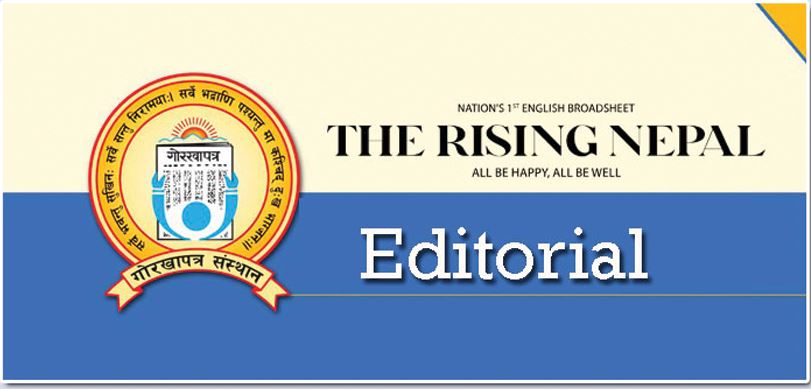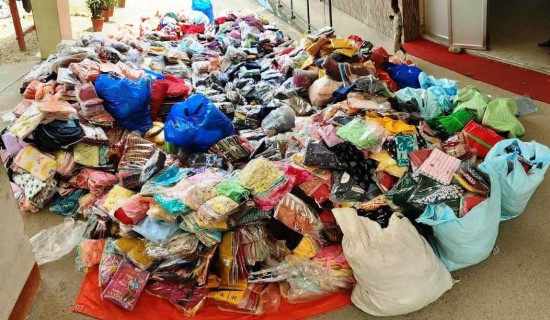- Saturday, 23 August 2025
Responsible Tourism
After Mount Everest got the moniker 'the world's highest dumping site', several tourist places of Nepal are on track to gaining such infamy. Whenever a place of beauty becomes accessible, throngs of people from far and wide flock to it to relish its mesmerising charm. And, as their number grows, so does the waste generated by them. When waste management fails to go hand in hand, the area suffers – environmentally and ecologically – as do its inhabitants. That's exactly what is happening in and around the Rara Lake area. Since the lake became accessible by road, the number of tourists visiting the territory has increased significantly, and so has their toll on the environment.
According to this daily's July 26 news report, the lack of waste management and sanitation around the lake has led to the area being littered with garbage. Trash is accumulating every day as tourists carelessly discard wrappers from biscuits, noodles and chocolates, as well as mineral water bottles and beer cans, among others. The foul odour emanating from them fills the air there. Particularly affected are the Murmatap Himal and Mili Chaur. On the second Friday of each month, the Nepal Army staff conduct waste collection and disposal activities. However, the volume of trash is so huge that their efforts have fallen short in addressing the problem. If not managed promptly, it also risks the local people's health.
In far-flung villages, many people drink water directly from the source for lack of sophisticated water purifying machines. When hazardous waste contaminates water bodies, it exposes them to the risk of waterborne diseases. This reminds one of the devastating 2009 cholera outbreak in the remote district of Jajarkot. The epidemic, besides claiming hundreds of lives, inflicted untold suffering on over 6,000 people, many of whom required hospitalisations and out-of-district referrals. Subsequent investigations linked the water sources contaminated with human faeces to the disease.
Given the gravity of the issue, steps must be taken to protect the environment and human health. Taking a cue from measures already in place can offer help. As increased tourism in the Everest region led to a substantial increase in waste generation, the government in February of 2024 made it mandatory for every Everest climber to bring their poo to the base camp. Effective waste management in tourist areas is not just about cleanliness; it's about protecting the environment, supporting local economies, and ensuring the sustainability of the tourism industry.
The 2002 Cape Town declaration recognises sustainable tourism as the one that minimises negative economic, environmental and social impacts; generates greater economic benefits for local people and enhances the well-being of host communities; improves working conditions and access to the industry; involves local people in decisions that affect their lives and life changes; makes positive contributions to the conservation of natural and cultural heritage; provides more enjoyable experiences for tourists through more meaningful connections with local people; and fosters a greater understanding of local cultural, social and environmental issues, among others.
Responsible tourism is also culturally sensitive, which instils respect between tourists and hosts, and builds local pride and confidence. Every tourist must be aware of these requirements and act accordingly. Responsible tourism requires that operators, hoteliers, governments, local people and tourists take responsibility to make tourism more sustainable. It’s high time for the government, as well as all those in the tourism industry, to take decisive steps towards sustainable tourism.

















